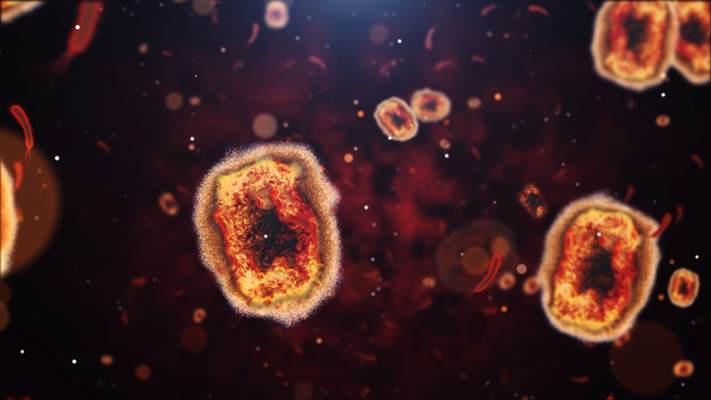Clinicians should be aware of the signs and symptoms of monkeypox. Some of the most common lesions associated with monkeypox can occur in the maxillofacial region.

In May, the first case of monkeypox, a rare viral zoonotic disease of unknown origin that is spread by close contact with an infected person, was identified in the United States, and cases have been on the rise ever since. Patients with skin rashes and macules, papules, pustules and vesicles should be referred to infectious disease wards so that doctors do not put themselves and others at risk of contracting the virus.
“Oral and maxillofacial surgeons and clinicians should be aware of the public health risk of a monkeypox outbreak, even in non-endemic countries,” write the authors, led by Dr.
In May, the World Health Organization (WHO) declared monkeypox an epidemic as it began to spread in non-endemic countries such as the US, Canada and Europe. As of July 18, there were 1,972 cases of monkeypox in the United States, according to the US Centers for Disease Control and Prevention (CDC).
Prior to the 2022 outbreak, monkeypox infections in humans were reported in several countries in West and Central Africa. According to the CDC, nearly all human cases outside of Africa have been linked to international travel to countries where the disease occurs or through imported animals.
Monkeypox is spread from one person to another through direct contact with infectious rashes, scabs, or bodily fluids. The virus is also spread by airborne droplets through prolonged face-to-face or intimate physical contact, or by touching clothing or other objects that have previously come into contact with an infectious rash or bodily fluids.
Transmission can occur from the onset of symptoms to the complete healing of the rash and the formation of a new layer of skin. According to the WHO, complications from monkeypox can include secondary infections, including encephalitis and sepsis.
As the number of cases grows, doctors should be familiar with the most common symptoms of monkeypox, which include headache, fever, swollen lymph nodes, and muscle pain and weakness. The most common maxillofacial lesions associated with monkeypox are papulopustular rashes with crusting and scarring, which may present as progressive necrotizing dermatitis with distinct vesico-pustular, scaly, and maculopapular stages.
In addition, monkeypox may be associated with other diseases, including herpes zoster, herpes simplex, measles, Zika, dengue, and syphilis. Small, brittle blisters on oral soft tissues, painful oral ulcers, multiple punctate skin lesions inside the mouth and lips, facial rash and severe pain, petechial lesions of the hard palate, and temporomandibular joint stiffness may indicate infection-related subclinical immunosuppression monkeypox.
Because some of the most common lesions can develop in the maxillofacial region, clinicians may be dealing with patients at risk for monkeypox. Knowing the signs and symptoms will help ensure they get the treatment they need and prevent further spread of the virus.
“Monkeypox remains a diagnostic challenge for clinicians, especially in non-endemic countries, and comorbidities can cause symptoms suggestive of monkeypox infection,” write Costa and colleagues.
